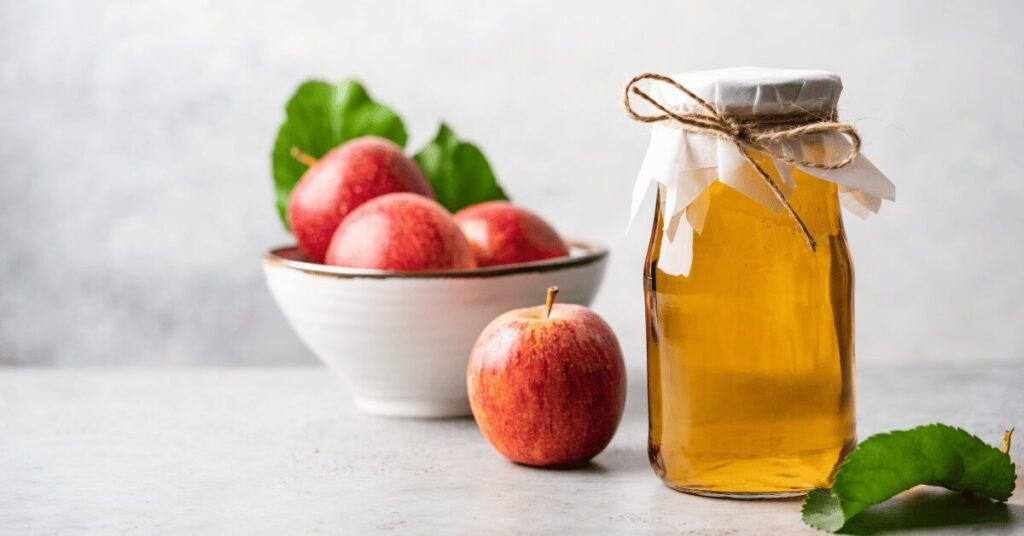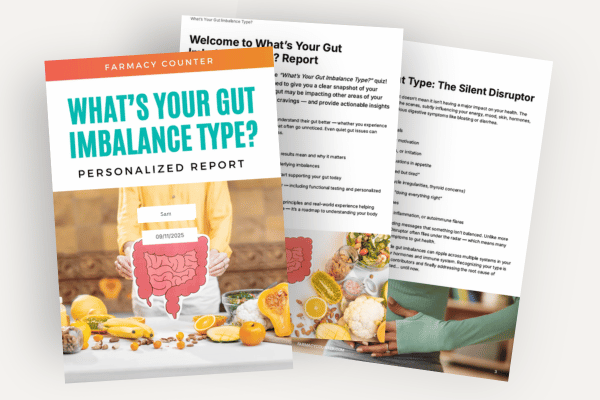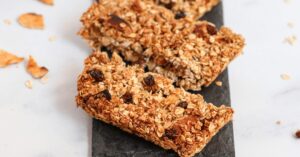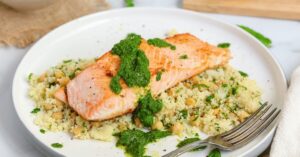
Acid reflux isn’t always what it seems.
Most people think it’s caused by too much acid, but often it’s actually the opposite.
The real issue? Stomach acid in the wrong place, or a digestive system that’s out of sync.
Your body is wise — symptoms like reflux are messages, not malfunctions.
And no, you don’t need to live on antacids or PPIs forever.
There are gentle, evidence-based ways to restore digestive rhythm, strengthen your gut’s natural barriers, and resolve reflux at its root.
Here are 9 functional strategies that can help you calm symptoms, restore rhythm, and finally feel like yourself again — even if you’ve tried everything and still feel stuck.
1️⃣ Don’t Eat Right Before Bed
Your body needs time to fully digest food before lying down.
Give yourself at least 2–3 hours between your last meal and sleep. When you’re horizontal, gravity no longer keeps your food and stomach acid safely below the esophagus. At the same time, your lower esophageal sphincter (LES) — the muscle “gate” between your stomach and esophagus — naturally relaxes during sleep. If digestion isn’t complete, reflux becomes much more likely.
Bonus tip: If nighttime reflux is your biggest symptom, consider raising the head of your bed by 4–6 inches or using a wedge pillow to support digestion overnight.

2️⃣ Eat Slower, Chew More
This one simple shift can change everything.
Rushed, distracted meals confuse your digestive system. Chewing thoroughly tells your brain, “It’s time to digest” — triggering the release of enzymes, stomach acid, and bile.
In functional medicine, we call this “eating hygiene.”
Try chewing each bite 20–30 times, pausing between bites, and putting down your fork periodically. Make your meal a moment of presence — not just fuel.
Bonus: Chewing well and eating slowly helps prevent overeating, which reduces pressure on your stomach and LES.

3️⃣ Consider Diluted Apple Cider Vinegar Before Meals
This might surprise you: reflux can actually be a sign of low stomach acid — especially if you feel bloated, burp frequently, or struggle with heavy digestion after protein-rich meals.
A small splash (1 tsp) of diluted apple cider vinegar in water 10–15 minutes before meals can gently stimulate your stomach’s acid production. It may support digestion by:
- Enhancing HCl production
- Activating pepsin, the enzyme needed to digest protein
- Triggering the proper closure of the LES
But go slowly. Always dilute and avoid if you have active ulcers or an inflamed esophagus. This isn’t about “fixing” digestion — it’s about reminding your body how to do what it was designed to do.

4️⃣ Activate Your Rest-and-Digest Mode
Stress is a massive — and often overlooked — trigger for reflux.
When you’re in fight-or-flight, your body down-regulates digestion by up to 60%. Why? Because when your body thinks you’re in danger, digesting your food becomes a low priority.
To re-engage the parasympathetic nervous system, try one of these before meals:
- Humming (stimulates the vagus nerve)
- Deep belly breathing (inhale for 4, exhale for 6)
- Gargling (yep, this really works)
- Sitting to eat with intention, without screens or stress
These may seem like small acts — but they create big shifts in digestive capacity.

5️⃣ Support Mucosal Integrity with DGL
Your esophagus doesn’t have the protective mucus lining that your stomach does — which is why acid in the wrong place hurts.
Deglycyrrhizinated Licorice (DGL) is a powerful herb that can:
- Coat and soothe the esophagus
- Reduce inflammation triggered by acid and pepsin
- Support mucosal healing over time
Look for DGL chewables, and take them 15–20 minutes before meals. This can be especially helpful while we work to address the root causes of reflux and wean off acid-blocking medications safely.
7️⃣ Identify Food Sensitivities
When we think of reflux triggers, most people blame the obvious culprits: spicy dishes, greasy meals, tomato sauce, maybe a glass of red wine.
But here’s the truth: for many, the real drivers are less obvious and more personal.
Functional medicine takes a deeper look — and often uncovers hidden food sensitivities that trigger inflammation, disrupt digestion, and increase pressure on the stomach. These can weaken the LES and set the stage for chronic reflux.
Common offenders include:
- Gluten — can drive gut permeability and inflammation, even in non-celiac individuals
- Dairy — especially problematic for those with lactose intolerance or casein sensitivity
- Soy, corn, and eggs — frequent triggers in gut-impaired individuals
- Processed oils (canola, soybean) — known to worsen inflammation and sluggish digestion
Even “healthy” foods can be inflammatory for you, depending on your gut health and immune response.
The tricky part? Food sensitivities are often delayed and cumulative, meaning symptoms can show up hours or even days later — as reflux, bloating, fatigue, brain fog, or skin issues.
That’s where a guided approach becomes essential.
While elimination diets can be incredibly effective, they can also feel overwhelming or hard to navigate solo. That’s why many people turn to reliable food sensitivity testing to get faster clarity and a more targeted starting point.
💡 We offer research-backed, at-home sensitivity kits to help you identify potential triggers — and take the guesswork out of what’s really irritating your gut.
Used alongside symptom tracking and a mindful reintroduction process, testing can provide a clear roadmap for reducing inflammation, calming your gut, and finally getting relief from reflux at the root.

8️⃣ Space Out Your Meals
Your digestive system isn’t just a food-processing machine — it runs on powerful biological rhythms that need time and space to work properly.
One of the most important (yet overlooked) players?
The migrating motor complex (MMC) — your gut’s natural “cleansing wave.”
Think of it like your internal janitor. About every 90–120 minutes between meals, the MMC sweeps residual food, bacteria, and digestive debris through the small intestine and into the colon.
But here’s the catch: it only activates when you’re not eating.
If you’re grazing all day — a handful of nuts here, a protein bar there — this wave never gets a chance to run. Over time, that can lead to:
- Increased fermentation and gas production
- Elevated intra-abdominal pressure, which worsens reflux
- Higher risk of bacterial overgrowth (SIBO)
- Slower digestion and more bloating
Instead, aim to space meals at least 3–5 hours apart, giving your gut a full cycle to reset and restore balance. No snacks. Just water or herbal teas between meals.
This one simple rhythm shift can lead to dramatic improvements in reflux, bloating, and even brain fog.
✨ Bonus tip: If you’re someone who feels hungry every two hours, that might be a sign of unstable blood sugar or hidden gut imbalances — both of which can be addressed through a functional medicine lens.

9️⃣ Hydrate Between Meals (Not With Them)
Water is essential for digestion — but timing matters more than most people realize.
Here’s why:
When you drink large amounts of water (or other liquids) during meals, it can dilute your stomach acid — which is exactly what you don’t want if you’re dealing with reflux, bloating, or sluggish digestion.
Your stomach acid plays a critical role in:
- Breaking down proteins
- Activating digestive enzymes
- Killing off harmful microbes
- Signaling the lower esophageal sphincter (LES) to stay closed
Too much liquid too soon essentially waters down this process — which may leave food sitting in the stomach longer, fermenting, and increasing pressure (aka: the perfect storm for reflux).
💧 Instead, aim to hydrate between meals, not with them.
Try this rhythm:
- Stop drinking ~30 minutes before a meal
- Sip only as needed during meals (ideally just a few ounces)
- Resume regular hydration ~60 minutes after eating
Bonus: Staying well-hydrated between meals supports your migrating motor complex (MMC) and lymphatic drainage — both essential for digestive flow and inflammation control.
Small change, big payoff. Your gut will thank you.

Functional Medicine Perspective: Reframing the Reflux Narrative
Let’s step back for a second. What is acid reflux — really?
Reflux is not a disease.
It’s a symptom of dysfunction — often caused by a combination of:
- A weak or dysfunctional lower esophageal sphincter (LES)
- Low stomach acid (not high)
- Stress-dampened digestion
- Poor eating hygiene
- Excess abdominal pressure
- Or underlying issues like H. pylori, hiatal hernia, food sensitivities, or nutrient deficiencies
That means we don’t just need to suppress symptoms.
We can resolve them — by supporting the body’s natural design.
🧪 Take the Next Step: Discover Your Gut Type
If acid reflux, bloating, or indigestion are showing up alongside low energy, mood swings, or sugar cravings, your body may be pointing to a deeper gut imbalance.
Reflux isn’t always about “too much acid” — it’s often about underlying dysfunction in the gut microbiome, digestive rhythm, or stress response.
We created a quick, research-backed quiz to help you uncover your unique gut imbalance type — and learn how to bring your digestion (and your energy) back into balance.
👉 Take the 3-minute “What’s Your Gut Imbalance Type?” Quiz here »
You’ll get a free, personalized 7-page report with:
✅ Your primary gut type (and what it means)
✅ Targeted food, supplement, and lifestyle tips
✅ A smarter, functional medicine approach to gut health and resilience

What’s Your Gut Imbalance Type?
Take our 3-minute quiz to discover your unique gut type — and get a personalized 7-page report with insights and actionable steps to support digestion, energy, mood, and overall gut health.






